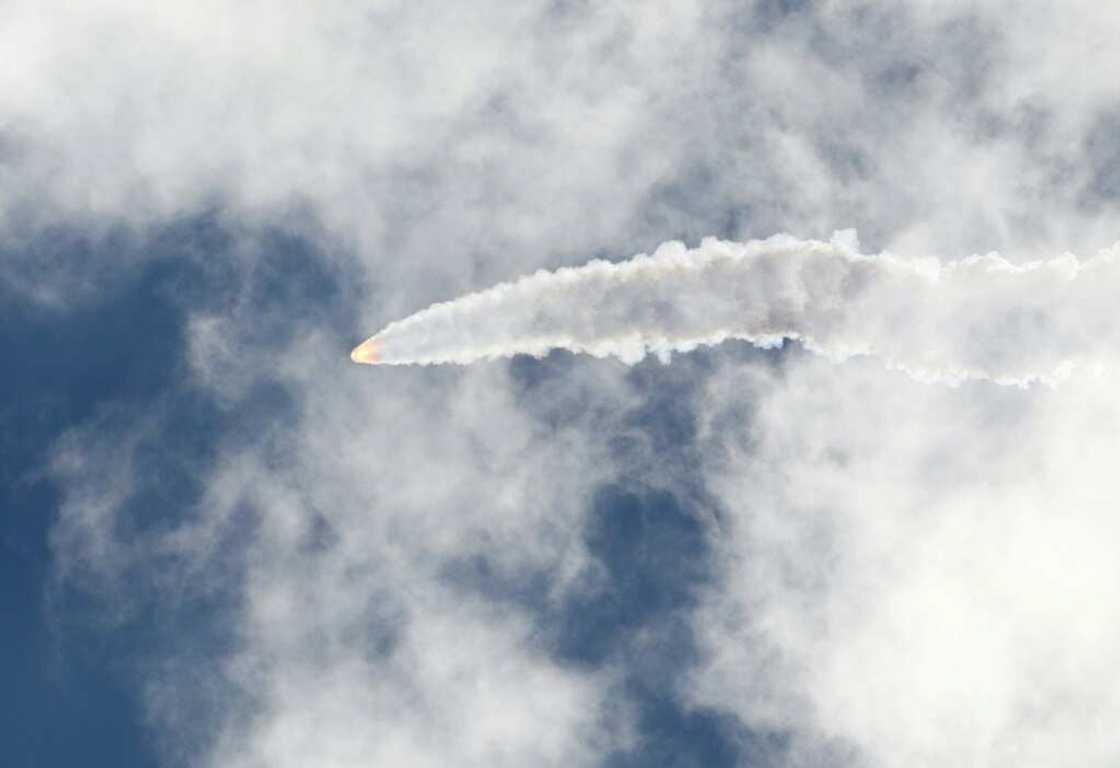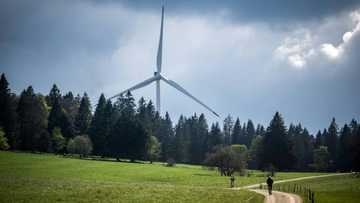Thruster problems delay Boeing Starliner docking with ISS

Source: AFP
PAY ATTENTION: Legit.ng Entertainment Awards 2024 Voting Is Alive. Choose the best entertainer in 15 categories for FREE.
The planned docking of a Boeing Starliner capsule carrying its first astronauts to the International Space Station has been delayed as teams work to troubleshoot problems affecting the propulsion system, NASA said Thursday.
Crewmates Butch Wilmore and Suni Williams are currently holding around 650 feet (200 meters) from the orbital outpost because of issues with reaction control system (RCS) thrusters that provide fine maneuvering capabilities.
Rendezvous was planned for 12:15 pm ET, but now cannot take place before 1:33 pm ET (1733 GMT) at the earliest, NASA announcers said during a live feed.
The astronauts, both ex-Navy test pilots, were piloting the craft manually, carrying out "hot fire tests" in an effort to restart the malfunctioning thrusters.
Earlier, NASA said the spaceship had sprung two new helium leaks since entering orbit, in addition to one leak that teams knew about before liftoff but chose not to repair, because the leak rate was within safety limits.
It was not yet clear if the leaks and the thruster issues were linked.
The spaceship finally blasted off from Florida on Wednesday following years of delays and safety scares -- as well as two recently aborted launch attempts that came as astronauts were already strapped in and ready to go.
Astronauts Wilmore and Williams are the first crew to fly Starliner, which Boeing and NASA are hoping to certify for regular rides to the ISS -- a role SpaceX has been fulfilling for the past four years, at significantly lower cost to the US taxpayer.
Starliner is just the sixth type of US-built spaceship to fly NASA astronauts, following the Mercury, Gemini and Apollo programs in the 1960s and 1970s, the Space Shuttle from 1981 to 2011, and SpaceX's Crew Dragon from 2020.
Boeing's program faced setbacks ranging from a software bug that put the spaceship on a bad trajectory on its first uncrewed test, to the discovery that the cabin was filled with flammable electrical tape after the second.
A successful mission would help dispel the bitter taste left by years of safety scares and delays, and provide Boeing a much-needed reprieve from the intense safety concerns surrounding its passenger jets.
During their roughly weeklong stay on the orbital outpost, Wilmore and Williams will continue to evaluate the spacecraft systems, including simulating whether the ship can be used as a safe haven in the event of problems.
After undocking from the ISS, Starliner will re-enter the atmosphere, with the crew experiencing 3.5G as they slow down from 17,500 miles per hour (28,000 kph) to a gentle parachute- and airbag-assisted touchdown in the western United States.
PAY ATTENTION: Unlock the best of Legit.ng on Pinterest! Subscribe now and get your daily inspiration!
Source: AFP




